Surge of New Dams in Southwest China Produces Power and Public Ire
Water-rich region, though, is getting dryer.
By Rachel Beitarie
Circle of Blue
Photograph by Toby Smith/Reportage by Getty Images for Circle of Blue
CHENGDU, China — Even in China, where power plants, coal mines, water-transport networks, and other big tools of industrialization are built at astonishing scale and with surprising speed, the hydropower dam construction program in Sichuan, Yunnan, Tibet, and other southwest provinces has no equal in China, or anywhere else for that matter.
Here in Suijiang County—a remote and mountainous region on the border between Sichuan and Yunnan provinces—the immense scope of the most aggressive dam-building program in history is immediately apparent. Near the county’s center, an army of men and equipment is building the Xiangjiaba Dam, a wall of concrete and steel that is 909 meters (2,982 feet) long and 161 meters (528 feet) high.
When completed in 2015, the dam will house eight turbines capable of generating just over 6.4 gigawatts. It will be the fourth-largest hydropower plant in China and one of the 20 largest power plants of any kind in the world, according to industry figures.
Immense as it is, the Xiangjiaba Dam is just one of a dozen hydropower projects of similar scale in what Chinese engineers call a “cascade” of electricity-generating projects that have been approved for the Jinsha River—a 2,300-kilometer section of the Yangtze River in Sichuan Province. An even larger project, the 278-meter-tall (911-foot) Xiluodo Dam, is nearing completion downstream and will have the capacity to generate 12.6 GW of electricity. Taken together, the 12 Jinsha River dams will be capable of generating 59 GW, or nearly as much power as all 4,000 hydroelectric generating stations in the United States.
China already operates half of the world’s large hydropower dams, and there are more on the way—many more.
Along China’s midsection, the upper Yangtze River and five of its tributaries have 100 big dams that are in various stages of planning, engineering, and construction. Additionally, at least 43 big dams are in the same stages of development on the Lancang, Nujiang, Hongshui, and Jiulong rivers in China’s southwest.
Big Risk, Big Reward
The stakes for China’s dam-building campaign encompass every sector of the economy, as well as a historical and ecological heritage that spans seven southern provinces. The provincial and central government leaders who support China’s program to tame wild rivers with concrete, steel, and stone assert that hydropower provides considerable benefits to reduce air pollution, rein in coal consumption, and generate electricity for fast-growing cities and industries.
But opponents say the dams are wrecking treasured canyons, ruining fisheries, and displacing hundreds of thousands of residents. Some critics worry that most of China’s new big dams are being built in a seismically active region that has experienced a number of big earthquakes, including one in May 2008 that killed 80,000 people in Sichuan Province. A number of scientists theorized that the weight of the lake held back by the 760-MW Zipingpu Dam—built less than two kilometers from a major fault line—may have helped to trigger the disaster.
Just as significantly, opponents note that China is planning to generate a considerable portion of its energy from hydropower, relying on rivers that are becoming more susceptible to droughts. Because of climate change, say scientists, China’s southern region is experiencing longer and more numerous droughts that are lowering water levels.
From 2000 to 2009, China’s total water resources fell 13 percent and almost all of the reduction in rain and snowmelt occurred in southern and southwestern China. From 2004 to 2009, total water reserves in Sichuan Province alone dropped 102 million cubic meters (26.9 billion gallons), or 4 percent, according to China’s National Bureau of Statistics.
In 2009 and 2010, a severe drought in southern China nearly shut down the 6.4-GW Longtan Hydropower Station—China’s second largest—because of low flows in the Hongshui River of the Guangxi Zhuang Autonomous Region, which shares a border with Vietnam. According to Chen Deqing, the plant’s deputy chief, the $US 4.2 billion plant generated 30 percent less electricity in 2009 than had been anticipated for that year and 59 percent less in the first quarter of 2010 than in the same period during the year before.
Other utilities experienced similar power reductions. The Guizhou Qianyuan Power Company, which operates a number of southern China dams, reported that water flow to its plants had dropped 30 to 60 percent last year. That drop had reduced power production by 230 million kilowatt hours, enough to supply a city of 15,000 people for a year.
“I don’t oppose dams as such” said Yang Yong, founder of the Hengduan Mountain Society and a prominent researcher of western China’s rivers for more than two decades. “But the risk I see in those projects is that there are so many of them being built all at the same time, and there is no comprehensive scientific research as for the overall impact, even if there are assessments for every project separately.”
Plentiful Mountains, Canyons, and Rivers
Such issues, though, have not slowed China’s fervor for new dam projects. If anything, in recent months, its ambition has grown stronger.
Just seven years ago, China’s hydroelectric-generating capacity reached 100 GW, surpassing the United States as the world’s top hydropower producer. Last year, according to China’s National Energy Administration, hydropower capacity reached 213 GW. By 2020, said the agency, Chinese turbines will generate 400 GW.
Dam construction has helped to make China’s cement and steel markets the world’s largest. It has also produced unusually active and visible political defiance, as residents protest being moved to make way for the big storage lakes formed by the dams.
Preservationists mourn the loss of magnificent mountain canyons, and environmental scientists declare the damage to fisheries and wild habitat will be incalculable. Still, China’s leadership, which had temporarily suspended some big dams pending more careful environmental reviews, is expressing new determination to reach their hydropower generation goals. Their calculus takes into consideration a swarm of big economic, energy, water-supply, geopolitical, and demographic trends that more hydropower development could help untangle, according to officials.
The China National Energy Administration claims that by 2020, the 400 GW of hydro-generating capacity will replace 1.3 billion metric tons of coal annually, eliminate 2.3 billion metric tons of climate-changing carbon emissions every year, and help China meet its target of producing 15 percent of the nation’s energy with “clean” sources by 2020.
Before he retired earlier this year, Zhang Guobao, the former administrator of the National Energy Administration, told the People’s Daily that he supported dam building because China’s runaway coal production was a national concern.
“I don’t think it is right for us to exhaust the coal reserves,” said Zhang, “as we must leave some room for development for future generations.”
Risk of Protests and Protesting Risks
The Jinsha River, or “River of Golden Sands,” is the name of the 2,300-kilometer (1,400-mile) section of the upper Yangtze River, from Yushu in Qinghai Province to Yibin in Sichuan, where the dam-building spree is occurring. The river and its tributaries cut through mountains to form spectacular canyons that are home to myriad ethnic minority groups and some of China’s most diverse wildlife habitat.
Along with the 12 dams in the works for the Jinsha River, 21 more are planned on the Min River, 21 on the Yalong River, and 17 on the Dadu River. In addition, 18 big dams are planned or are underway on the Qingyi River, 11 on the Litang, and six on the Jiulong.
Local residents are well aware of the consequences for getting in the way of the projects. In 2004, more than 100,000 people protested the Pubugou Dam project in Sichuan Province until riot police crushed the demonstration. Then, in 2006, Chen Tao—a leader of the protests from two years before—was executed for what authorities said was his role in the death of a policeman.
The 3,300-MW dam was completed a year ago.
Environmental Costs Concern Top Leaders
Police response to opposition hasn’t stopped local residents or the country’s top leaders—including Premier Wen Jiabao—from asking questions about such a breathtakingly big construction program.
In 2004, Wen halted development on 13 dams along Yunnan Province’s Nu River. This move was in response to a rapid and aggressive campaign by Chinese NGOs and journalists that catalyzed national debate over dam building. This domestic campaign further ignited international criticism of the environmental damage to such a globally significant wild river. Wen repeated his concerns in 2009 for the same reasons.
But China’s soaring energy demand, and its national goals of producing more clean energy that reduces climate changing carbon emissions, prompted China’s powerful National Development and Reform Commission late last year to call for dam development on the Nu River to proceed. Last week, the order halting the Nu River dams was lifted after China’s new 12th Five-Year Plan set ambitious energy-efficiency, renewable-energy, and water-conservation goals.
“We believe the Nu River can be developed, and we hope that progress can be made,” Shi Lishan, the deputy director of new energy at the National Energy Administration, told Chinese National Radio in February.
In June 2009, the China Ministry of Environmental Protection suspended construction of two big projects upstream on the Jinsha River. The 1,800-MW Longkaikou Dam and the 2,100-MW Ludila Dam projects were delayed because the developers—Huaneng Power and Huadian Power, two of the largest power producers in China—did not conduct environmental reviews prior to the start of construction.
Still, under pressure from provincial authorities and dam developers, these projects resumed last year on the Jinsha River.
Dam Construction Results in Water Shortages
Sichuan—a province slightly bigger than California with a population of 80 million—is said by Chinese engineers to have the second-largest hydroelectric potential of all Chinese provinces, behind Tibet. The reason goes beyond the scenic canyons that distinguish the province.
Water resources in Sichuan historically have totaled around 240 billion cubic meters (63 trillion gallons), or 10 percent of China’s total freshwater reserves. But the abundance of water, which gave the province its name—“Four Rivers”—is running low in some sectors, in part due to climate change that is affecting rainfall and snowmelt, in part due to heavy pollution that has ruined supplies, and in part as the result of hydroelectric production.
Chengdu, the provincial capital, is now counted among the 400 Chinese cities that experience water scarcity, says Tian Jun, the executive secretary of Chengdu’s Urban Rivers Association.
“While the urban population continues to grow, Chengdu is getting less and less water every year,” she said.
Professor Ai Nanshan—a geologist from Sichuan University and president of the Urban Rivers Association—told Circle of Blue that when it comes to the confrontation between energy demand and water supply, the former most often prevails in growth-driven China.
“Some dams, like those on the Min River, and like the Xiangjiaba Dam, are supposed to have a triple function,” Ai said. “They are used for power generation, but are also supposed to play a role in flood control, and the reservoirs behind them were supposed to be used for water storage.
“In reality, during the dry season, the reservoir of the Zipingpu Dam on the Min River is supposed to supply water to Chengdu, but it is also used to keep generating power. That task takes priority over the water needs of the population. The government is weighing both interests, but economic gain from hydropower proves a big temptation.”
The irony, say environmental and energy authorities, is that pursuing new dam construction in a region that is slowly getting dryer—thus reducing hydropower capacity—could prompt China to become even more aggressive in developing coal-fired energy production.
Professor Chen Guojie, a researcher at the Sichuan Mountain Hazards and Environment in Chengdu and an affiliate of the Chinese Academy of Sciences, summed up the conflicting trends this way: “The dams are built to provide energy for the next hundred years, according to plans based on current natural conditions. But these conditions are changing fast. Not taking climate change into account means that not only are the dams in Sichuan province harmful for the environment, they might very well prove dysfunctional in the not-so-distant future.”
Rachel Beitarie is an Israeli journalist based in Beijing. This is her first article for Circle of Blue. Map and graphic by Kelly Shea, Tessa Tillett, Malik Cato, and Elizabeth Spangler, undergraduate students at Ball State University.
Toby Smith is a British photojournalist represented by Reportage by Getty Images who specializes in global energy and environment matters. His further work can be viewed on his website and he can be reached at: toby@shootunit.com
Contributions by Keith Schneider, Traverse City-based senior editor for Circle of Blue, and Jennifer Turner, Washington, D.C.-based director of the China Environment Forum at the Woodrow Wilson International Center for Scholars. Contact Keith Schneider

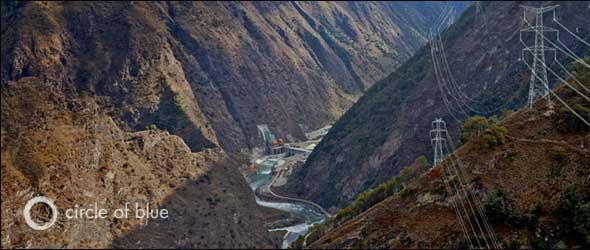
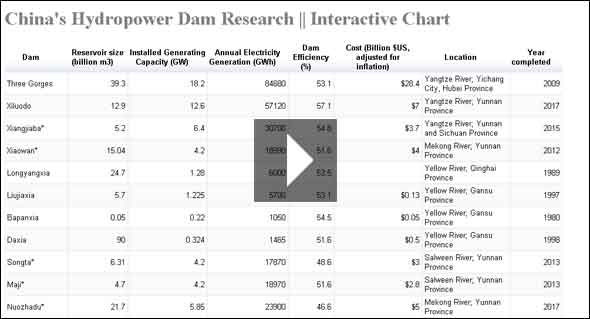
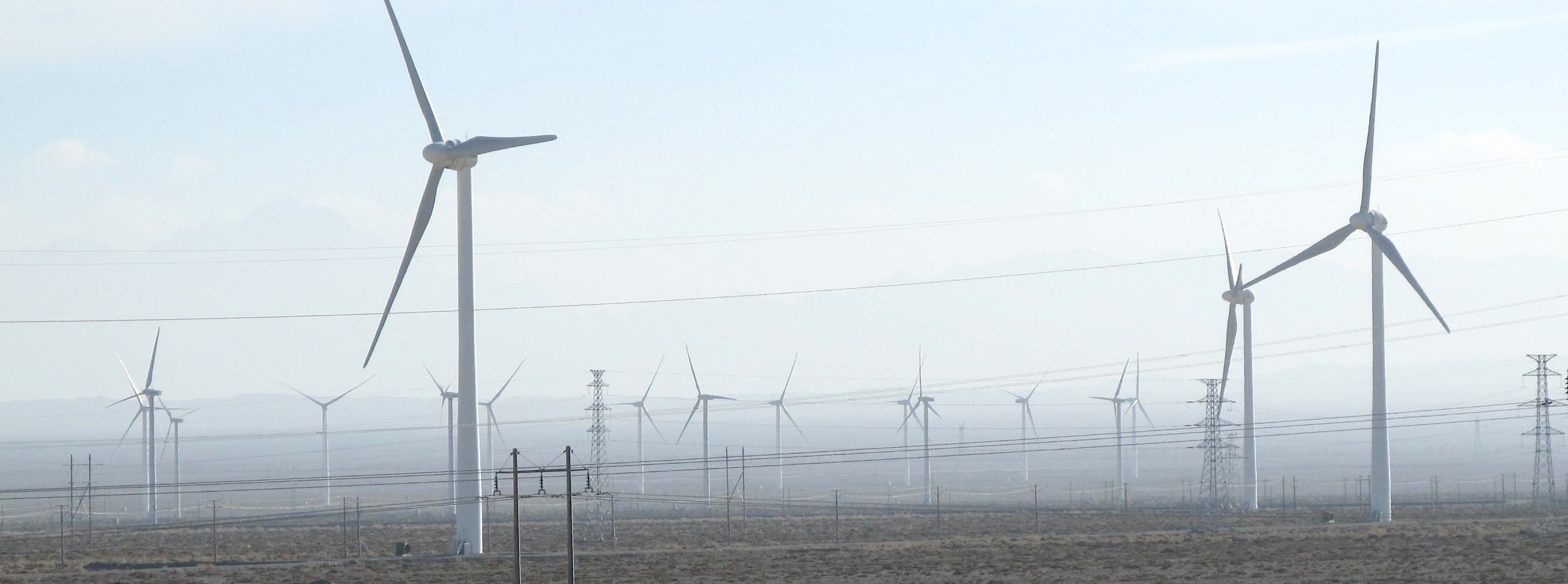

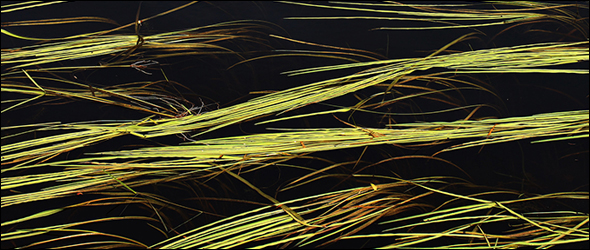

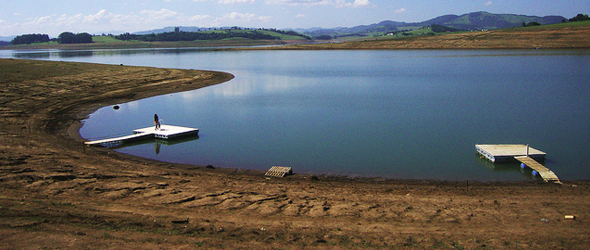


While it’s a good article… I’d recommend not using “burst” to mean a group of dams… the headline “Burst of New Dams in Southwest China…” reads like new dams are bursting – breaking, failing. Perhaps just “New Dams in Southwest China…” would do the trick.
Planet of Earth Energy Crisis.
Dear Sir,
Subject mater all over the World facing Energy problem So I am trying to
explain an idea for Old & New Dams / Reservoirs Hydel Civil Design can
move in architectural Transition to increase our energy potential
Because we are losing heavy quantum of already storage water in our
Big Dams to generate past technology now need to convert into New
theory of Technology.
Thanks.
with best regards.
Chinese are becoming to be such as example of the world energy consumption. We can see how things can be sort out to work for people and their energy demand. Also we can learn a lesson of it as we may come to that stage, with increasing population as well, quite soon.
I think circleofblue always does interesting reporting on environmentalism in China. There are stories here that can’t be found elsewhere. I wrote about this topic on my eco-blog: http://www.bluegranola.com. Come check it out!
Planet of Earth Energy Crisis.
Dear Sir,
The Subject matter is all over the World facing Energy problem, So I am trying to
Explain an idea for Old & New Dams / Reservoirs Hydro electric projects Civil Design Geometry
Can be modifying in Architectural Transition to increase our energy potential. Because we are
Losing heavy quantum of already storage water in our Big Dams and its relevant projects to generate Hydro Electric old technology, Now it must be need to convert into new theory of Scientific Technology as per utilizing in the way of experiment with foreign expertise at any Hydro electric base Model of concern Department or forum to finalize the following unique and entire world Globalize developing idea for its further implementations in the current ongoing and next coming future Hydel projects as soon as possible.
Thanks.
with best regards.
RE: Planet of Earth Energy Crisis.
Dear Sir,
Thank you very much for your interest in proposed idea consideration, Due to other sectors & individuals responses take to my self need to be consult a proper forum regarding the situation now I am able to communicate with your good self. Also sorry for some days delaying answer from my side.
Please consider some point of views as following:
1. Idea come into my mind Last year. Some discussions with local personals in respective field but not proper and positive response yet.
2. Research papers / abstracts need to be develop after consultations subject mater from foreign expertise as like your consideration of interest.
3. Theories & ideas can be implement upon debating at world wide conversations with its facts and figures must be considered.
4. It doesn?t mean that my self have no proper proposal for describing because this one is a serous issue for entire world to escaping the current energy crises.
5. Mechanism / Methodology of idea to implement with Design criteria must be Liaise in near future as well as your kind and positive action.
6. My self keep this idea to preventing not go towards wrong ways, Sir your good self know better to me very well. Because after all it is the property of whole world and its creatures, Which will be fully utilize upon when enhance the capability of electrical energy generate according to the new term of way.
Sir about my CV.
My Name is Shabbir.
Qualification: School certificate.
After this go toward Technical Course for Surveyor in 1982.
Then start as Land Surveyor Jobs in different Companies in Pakistan.
During in 30 years jobs mostly work on Topographic & as built Surveys.
Observations & Knowledge come through different Projects and Sites in the due course of my whole life.
Thanks.
Hoping for a positive response will be coming soon as well as your good self reply.
with best regards.
Shabbir (Land Surveyor)
The World Bank estimates that forcible “development-induced displacement and resettlement” now affects 10 million people per year. According to the World Bank, an estimated 33 million people have been displaced by development projects such as dams, urban development, and irrigation canals in India alone.
India is well ahead in this respect. A country with over 3600 large dams within its belt can never be the exceptional case regarding displacement. The number of development-induced displacement is higher than the conflict-induced displacement in India. According to Bogumil Terminski, more than 10 million people are estimated to have been displaced by development each year.
Athough the exact number of development-induced displaced people (DIDPs) is difficult to know, estimates are that, in the last decade, 90-100 million people have been displaced by urban, irrigation, and power projects alone, with the number of people displaced by urban development becoming greater than those displaced by large infrastructure projects (such as dams). DIDPs outnumber refugees, with the added problem that their plight is often more concealed.
This is what experts have termed “development-induced displacement.” According to Michael Cernea, a World Bank analyst, the causes of development-induced displacement include water supply (dams, reservoirs, irrigation); urban infrastructure; transportation (roads, highways, canals); energy (mining, power plants, oil exploration and extraction, pipelines); agricultural expansion; parks and forest reserves; and population redistribution schemes.